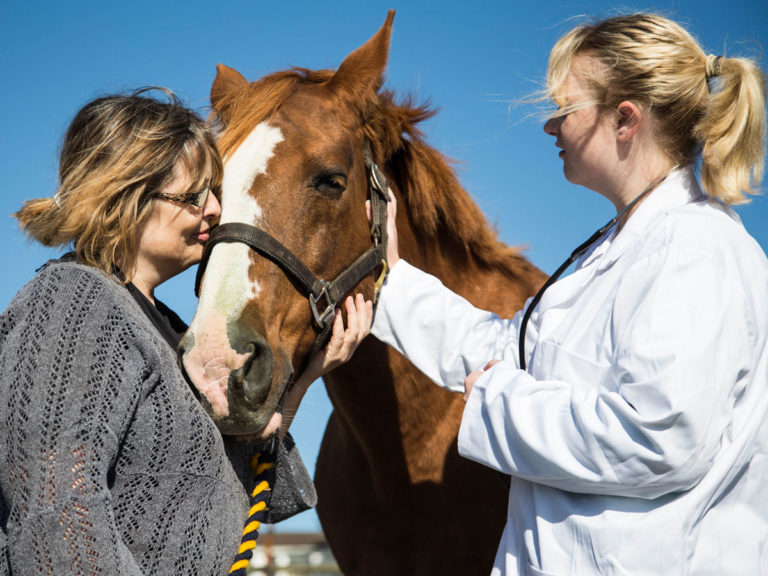
Editor’s note: CareCredit has partnered with EquiManagement to bring you summaries of equine business presentations from the 2021 AAEP Convention. We will run two original articles per month in January, February and March, then CareCredit will help us provide in-depth AAEP Convention business coverage in the Spring 2022 issue of EquiManagement magazine.
Nina Mouledous, DVM, Trust Veterinarian for the AVMA Professional Liability Insurance Trust (PLIT), gave a comprehensive presentation on equine malpractice claims at the 2021 Annual AAEP Convention in Nashville, Tennessee.
According to the speaker, “The most common and costly equine malpractice complaints involve buyer complaints related to pre-purchase examinations (PPEs).” The top six claims involve PPE, rectal tears, castrations, anesthesia recovery, consent issues, and injection complications, she reported.
Lawsuits more commonly proceed with PPE claims than other types of equine malpractice claims, Mouledous said. When settled, these cases also have higher costs. Not surprisingly, most of the claims involve performance horses, particularly of the hunter/jumper, dressage, and western disciplines. The claims often center around economic loss due to lameness of the horse that was examined prior to purchase, often accompanied by missed radiographic lesions.
When payouts are required in equine claims, 80% are for lameness and radiographic misdiagnosis, with missed radiographic lesions commanding the most money.
Other PPE complaints associated with undetected heart murmurs, missed ophthalmic disease, unobserved surgical scars, and failure to recommend genetic testing represent only a small proportion of total claims awarded.
Mouledous presented a comprehensive set of recommendations intended to minimize legal issues after PPE. To begin, she suggested that veterinarians be very clear who they are working for and avoid conflicts of interest.
“If the veterinarian has a relationship with the seller, this is considered a conflict of interest and the safest course of action would be to decline the PPE and recommend another veterinarian” she stated.
In lieu of this, documenting that all parties waive conflicts of interest might be helpful, as is obtaining permission to disclose complete medical histories and preexisting conditions if they have knowledge of the horse’s background or access to the horse’s medical records.
Next, the speaker emphasized the importance of documenting everything about the PPE, perhaps even by videoing the exam. If radiographs are taken, obtaining the opinion of a referral radiologist or of multiple veterinarians in the practice is recommended. Blood work for inherited or genetic issues and drug screening should be offered and documented.
In addition, the presenter urged the examining veterinarian to attempt to positively identify the horse, especially if the buyer is not present, by asking for a copy of the Coggins test or registration papers. Attempts to ensure accuracy of the age are very important to prevent claims by reading tattoos, checking registration papers, performing a dental arcade exam or reading microchips. Documentation of the steps taken to accurately determine the age of the horse is crucial, Mouledous said.
In closing, Mouledous strongly suggested writing a comprehensive report, preferably with identifying photographs, and indicating that all systems have been examined, including ophthalmic, respiratory, neurologic, integument (especially for scars) and reproductive tract, if applicable. The report should also include commentary on radiographs and ultrasound images. In order to ensure receipt of the report, consider sending a hard copy via certified mail to officially document receipt by the buyer.
This content is subject to change without notice and offered for informational use only. You are urged to consult with your individual business, financial, legal, tax and/or other advisors with respect to any information presented. Synchrony and any of its affiliates, including CareCredit (collectively, “Synchrony”), make no representations or warranties regarding this content and accept no liability for any loss or harm arising from the use of the information provided. All statements and opinions in this article are the sole opinions of the author and roundtable participants. Your receipt of this material constitutes your acceptance of these terms and conditions.








